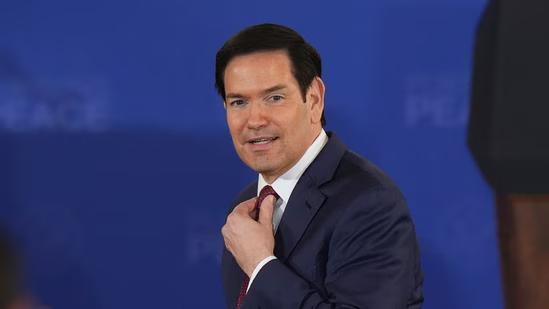
We Keep an Eye on India & Pak Situation Every Single Day: US
The situation between India and Pakistan has been tense for a long time, with frequent skirmishes and retaliatory attacks along the Line of Control (LoC). In a recent statement, US Secretary of State Marco Rubio revealed that the US keeps a close eye on the situation between the two nuclear-armed neighbors “every single day”. This statement has raised concerns about the US’s involvement in the conflict and its potential role in resolving the issue.
Rubio’s statement was made in the context of the ongoing conflict between Russia and Ukraine. He emphasized that the US is not looking for a permanent ceasefire, but rather a peace deal that addresses the underlying issues. This approach is significant, as it suggests that the US is willing to engage with both India and Pakistan to find a lasting solution to the conflict.
The situation between India and Pakistan has been volatile for years, with both countries accusing each other of ceasefire violations. The conflict has resulted in significant human suffering, with countless civilians caught in the crossfire. The international community has repeatedly called for both sides to exercise restraint and engage in peaceful dialogue to resolve their differences.
The US has a long history of involvement in South Asia, with a significant presence in both India and Pakistan. The country has provided military aid and training to both nations, and has played a key role in mediating disputes between them. However, the US has also been critical of human rights abuses in both countries, and has pushed for greater transparency and accountability.
Rubio’s statement suggests that the US is willing to continue its involvement in the region, with a focus on finding a lasting solution to the conflict. This approach is significant, as it recognizes that a ceasefire is not a sustainable solution, but rather a temporary measure that can fall apart quickly.
The US has a number of options available to it in terms of resolving the conflict between India and Pakistan. One approach would be to engage in direct talks with both countries, with the goal of finding a lasting solution to the conflict. The US could also use its influence to encourage both sides to engage in peaceful dialogue, and to provide support for any agreements that are reached.
Another option would be for the US to play a more active role in mediating the conflict, by providing facilitation services or by hosting talks between the two countries. This approach has been successful in the past, with the US playing a key role in mediating the Camp David Accords between Israel and Egypt in the 1970s.
The conflict between India and Pakistan is complex and multifaceted, with deep historical and cultural roots. Any resolution will require a comprehensive approach that addresses the underlying issues and concerns of both sides. The US has a key role to play in this process, and its involvement could be instrumental in finding a lasting solution to the conflict.
In conclusion, Marco Rubio’s statement that the US “keeps an eye” on the situation between India and Pakistan “every single day” is significant, as it suggests that the US is willing to engage with both countries to find a lasting solution to the conflict. The US has a number of options available to it in terms of resolving the conflict, including direct talks, facilitation services, and mediation. A comprehensive approach that addresses the underlying issues and concerns of both sides is necessary to find a lasting solution to the conflict.



